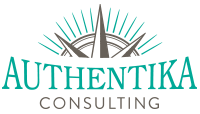
How do you know if you have blind spots?
It never fails. At some point in a coaching engagement, the topic of self-awareness will come up in conversation. My client will share that they thought their approach or style of leadership would be taken in the way they intended it, but later learn that what they believed about their behaviour actually did not sit well with others.
All too often, they lament “If only someone would have told me this sooner.” This learning experience is an important, but agoningly painful one.
A major misconception about self-awareness is that we do not need to focus on it as we do other “soft skills”. What I have learned over the years of being a leader as well as a leadership coach and trainer, is that humility, building trust, and gaining self-awareness are critical to your success.
If you are not self-awareness, you put a hard ceiling on your potential to achieve more, learn, and grow personally and professionally.
Unless you are working with a coach or a mentor, you are likely not making time to improve your self-awareness. If you hesitate or struggle to answer the question – how confident am I in the way others see me? – there is likely an opportunity to work on the skill of self-awareness.
Closing the gap on your blind spot
In an earlier blog post, What You Think May Not Be True, I shared a video about the Dunning-Kruger Effect which addresses why people fail to recognize their own incompetence.
Developing your self-awareness helps you close the gap on your blind spot so that even if no one tells you that you have a piece of broccoli stuck between your teeth, you will figure it out by asking someone why they are smiling at you in that funny way. Ah-ha! Now you can make the connection and discretely remove the misplaced food particle.
How do you develop self-awareness?
Dr. Tasha Eurich’s book INSIGHT provides key findings to support the importance of self-awareness. She offers three tips to consider in this short video clip. She also writes that 95 percent of people believe they are self-aware (hence the reason they do not feel they need to work on improving it), but only 10 percent really are.
Often, I conduct online self-assessments for my clients. The type of assessments range from DISC, EIQ-2, Motivators, Learning Styles, Career Assessments, 360 Leadership Assessments, to the MBTI Type Indicator.
Self-assessments are valuable tools. The debrief conversation is essential. Walking through the assessment report with your coach is key to discovering your observable behaviours, natural tendencies, and preferences.
What else?
There are many other ways you can foster your self-awareness. Tactics to consider include journaling, self-reflection, actively seeking specific feedback, working with a coach, reading about topics that are contrary to your beliefs, and stepping outside your comfort zone.
Most importantly, you must want to see yourself clearly.
Dr. Eurich shares that the process requires looking at yourself from the inside out as well as the outside in. Self-assessments are inside-out work. Seeking feedback and gaining a better perspective on how others see you is outside-in work. She also suggests finding three to five “loving critics” that you can go to and ask for feedback.
The criteria I use for loving critics are people I trust and respect. It is important to check in regularly with your group loving critics and offer to pay it forward for others, should you be asked to be a loving critic too.
Transformation work is not easy
None of this inside-out and outside-in work is easy. The benefits of investing in this self-exploration can be transformational. You must decide if you want to remain blissfully ignorant or open and willing to seek the truth about yourself. This is not an insignificant question and when you choose the path of seeking the truth, you will embark upon a journey that requires your courage, compassion, and patience. It is not a once-and-done exercise. It is a life-long undertaking.
Knowing the truth about yourself is a worthy pursuit and an important investment of your time and energy.



